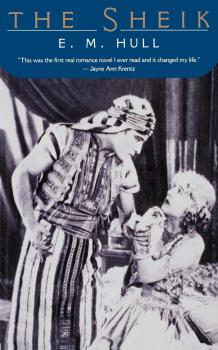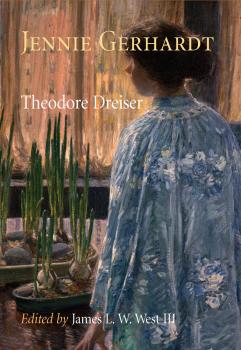ТОП просматриваемых книг сайта:















Pine Street Books
Скачать книги из серии Pine Street BooksАннотация
The Widowing of Mrs. Holroyd , written immediately after Sons and Lovers, is one of D. H. Lawrence's most significant early works. The play, Lawrence's first, is the alter ego of the story «Odour of Chrysanthemums» and, like the short story, deals with a catastrophe in the lives of a coal mining family. Drawing upon the intensity of events that unfold in the miner's kitchen, the play explores a marriage bowed under the weight of a husband's drinking and infidelity and peers into the strange, burgeoning relationship between the neglected wife, Mrs. Holroyd, and the young electrician in whom she seeks emotional refuge. First published in 1914, The Widowing of Mrs. Holroyd is a bare tracing of the ways in which a marriage has gone wrong.
Аннотация
"In the Days of Serfdom" and Other Stories , originally published in 1911, presents in miniature themes developed in Tolstoy's longer works War and Peace and Anna Karenina . The compelling stories in this collection have largely been ignored by contemporary scholars and teachers because of their general unavailability. Available once again, the stories reveal new thematic and stylisitic dimensions to Tolstoy's oeuvre. While not all of the stories deal with actual serfdom, they all address the legacy of serfdom, of choicelessness, in Tolstoy's Russia. These stories are also thoroughly modern, concerned as they are with the market economy, changing values, and women's roles in society. Artistically and historically significant, they constitute ethical and spiritual questionings that deal with lives out of control, with characters making sense of the experience of living.
Аннотация
Bashan and I is the moving story of Thomas Mann's relationship with his spirited German short-haired pointer. From their first encounter at a local farm, Mann reveals how he slowly grows to love this energetic, loyal, and intelligent animal. Taking daily walks in the nearby parkland, Mann begins to understand and appreciate Bashan as a living being, witnessing his native delight in chasing rabbits, deer, and squirrels along with his careful investigations of stones, fallen branches, and clumps of wet leaves. As their bond deepens, Mann is led to contemplate Bashan's inner life, and marvels at the ease with which his dog trusts him, completely putting his life into his master's hands. Over time, the two develop a deep mutual understanding, but for Mann, there is always a sense of loss at never being able to enter the private world of his dear friend, and he slowly becomes conscious of the eternal divide between mankind and the rest of nature. Nonetheless, the unique relationship quietly moves to the forefront of Mann's life, and when master and companion are briefly separated, Mann is taken aback by the depth of his loneliness without his dog. It is this deep affection for another living creature that helps the writer to reach a newfound understanding of the nature of love, in all its complexity. First published in 1916 and translated into English in 1923, Bashan and I was heralded for its simple telling of how a dog became a priceless companion, an animal who brought meaning to the author's life.
Аннотация
Though most widely known for the novella The Great Gatsby , F. Scott Fitzgerald gained a major source of income as a professional writer from the sale of short stories. Over the course of his career, Fitzgerald published more than 160 stories in the period's most popular magazines. His second short fiction collection, Tales of the Jazz Age (1922), includes two masterpieces as well as several other stories from his earlier career. One, «May Day,» depicts a party at a popular club in New York that becomes a night of revelry during which former soldiers and an affluent group of young people start an anti-Bolshevik demonstration that results in an attack on a leftist newspaper office. «The Diamond as Big as the Ritz» is a fantastic satire of the selfishness endemic to the wealthy and their undying pursuit to preserve that way of life. All of these stories, like his best novels, meld Fitzgerald's fascination with wealth with an awareness of a larger world, creating a subtle social critique. With his discerning eye, Fitzgerald elucidates the interactions of the young people of post-World War I America who, cut off from traditions, sought their place in the modern world amid the general hysteria of the period that inaugurated the age of jazz. This new edition reproduces in full the original collection, stories that represent a clear movement in theme and character development toward what would become The Great Gatsby . In introducing each story, Fitzgerald offers accounts of its textual history, revealing decisions about which stories to include.
Информация о книге
Автор произведения F. Scott Fitzgerald
Жанр Публицистика: прочее
Серия Pine Street Books
Аннотация
Originally appearing at the same time as the pacifist novel All Quiet on the Western Front , this powerful collection provides a glimpse into the hearts and minds of an enemy that had been thoroughly demonized by the Allied press. Composed by German students who had left their university studies in order to participate in World War I, these letters reveal the struggles and hardships that all soldiers face. The stark brutality and surrealism of war are revealed as young men from Germany describe their bitter combat and occasional camaraderie with soldiers from many nations, including France, Great Britain, and Russia. Like its companion volume, War Letters of Fallen Englishmen , these letters were carefully selected for their depth of perception, the intensity of their descriptions, and their messages to future generations. «Should these letters help towards the establishment of justice and better understanding between nations,» the editor reflects in his introduction, «their deaths will not have been in vain.» This edition contains a new foreword by the distinguished World War I historian Jay Winter.
Информация о книге
Автор произведения Philipp Witkop
Жанр Биографии и Мемуары
Серия Pine Street Books
Аннотация
Set in Alabama and Washington, D.C., in the early part of the twentieth century, W. E. B. Du Bois's first novel weaves the themes of racial equality and understanding through the stark reality of prejudice and bias. Originally published in 1911 and conceived immediately after The Souls of Black Folk , Du Bois turned to fiction to carry his message to a popular audience who were unfamiliar with his nonfiction works. Du Bois addresses the fact that, despite the legal emancipation of African Americans, the instruments of oppression, in both the economy and government, remained in good working order. At the time he was writing, powerful white industrialists controlled the cotton industry, the «silver fleece» that depended, as it did during slavery, on the physical labor of African Americans. White Americans also controlled local and national government. In the novel, Blessed «Bles» Alwyn, a young man seeking formal education to improve himself, is captivated by Zora, a vivacious, independent woman who lives outside society in a mysterious swamp. Faced with shocking events in Zora's past and ambivalence about how a black man should integrate into American society, Bles pursues his goals and ends up in Washington to assist on a senator's campaign. While in the city, he meets successful African Americans—and falls in love—but he ultimately recoils from the hypocrisies they must endure in order to be accepted in society. Instead, he is compelled to return to Alabama and Zora, where he must face his greatest challenges and fears. With its frank and clear language, The Quest of the Silver Fleece is a remarkable portrait of racial prejudice at the turn of the twentieth century. Through the characters, Du Bois demonstrates the efficacy of self-sufficiency for those who face discrimination while championing the benefits of strength in diversity to American society as a whole.
Аннотация
At his peak, about the time this collection was first published in 1910, Jack London was the highest-paid and perhaps the most popular living American writer. Lost Face consists of seven short works, including the title story and his finest and best-known short story, «To Build a Fire.» Now in paperback for the first time, this collection appears as it was originally published. Jack London grew up in poverty, educated himself through public libraries, and, in addition to writing, devoted his life to promoting socialism (although he eventually resigned from the Socialist Party). Despite his financial and critical success, in the end he succumbed to alcoholism and depression and died of a drug overdose. During the 1898 gold rush, London traveled to the Klondike to seek his fortune. It was this experience that had the most profound effect on his writing. Not only did he mine the far north environment for subject matter (and all the stories in Lost Face take place in the Yukon), but his laconic style drew upon its cold harshness and loneliness, where people and beasts had to work together or against each other for survival. London's stories are treasured for their insights into the psychology of both people and animals—particularly dogs—and Lost Face is a brilliant collection of some of the finest examples of London's craft.
Аннотация
Terminations is Henry James's most thematically unified collection of stories. Gathered in 1895, and following his fascination with the supernatural in the 1880s, this elegant collection explores the sadness of loss, both physical and spiritual, and finds James at his introspective best, while providing a glimpse of how the author dealt with death in his own life. The collection consists of four stories: «The Death of the Lion,» in which the narrator prepares to write an obituary for a great editor he admired; «The Coxon Fund,» where an endowment from a will comes unexpectedly to a seemingly undeserving character; «The Middle Years,» a brief glimpse at the public reception of a novel and the private sacrifice it exacted from its author; and «The Altar of the Dead,» a moving meditation on finding meaning in life that James wrote in response to the death of a close lady friend. Terminations reveals a writer preoccupied with the endings of life, expressing his thoughts in prose that is as finely balanced as the most famous of James's work.
Аннотация
Diana Mayo is young, beautiful, wealthy—and independent. Bored by the eligible bachelors and endless parties of the English aristocracy, she arranges for a horseback trek through the Algerian desert. Two days into her adventure, Diana is kidnapped by the powerful Sheik Ahmed Ben Hassan, who forces her into submission. Diana tries desperately to resist but finds herself falling in love with this dark and handsome stranger. Only when a rival chieftain steals Diana away does the Sheik realize that what he feels for her is more than mere passion. He has been conquered—and risks everything to get her back. The power of love reaches across the desert sands, leading to the thrilling and unexpected conclusion. One of the most widely read novels of the 1920s, and forever fixed in the popular imagination in the film version starring the irresistible Rudolph Valentino, The Sheik is recognized as the immediate precursor to the modern romance novel. When first published there was nothing like it: To readers the story was scandalous, exotic, and all-consuming; to such critics as the New York Times the book was «shocking,» although written with «a high degree of literary skill.» In the author's native England, the bestselling book was labeled «poisonously salacious» by the Literary Review and banned from some communities. But the public kept reading. The influence of The Sheik on romance writers and readers continues to resonate. Despite controversy over its portrayal of sexual exploitation as a means to love, The Sheik remains a popular classic for its representation of the social order of its time, capturing contemporary attitudes toward colonialism as well as female power and independence that still strike a chord with readers today.
Аннотация
Regarded as one of Dreiser's best novels, Jennie Gerhardt is here recaptured as it was originally written, restoring it to its complete, unexpurgated form.
Информация о книге
Автор произведения Theodore Dreiser
Жанр Зарубежная классика
Серия Pine Street Books










